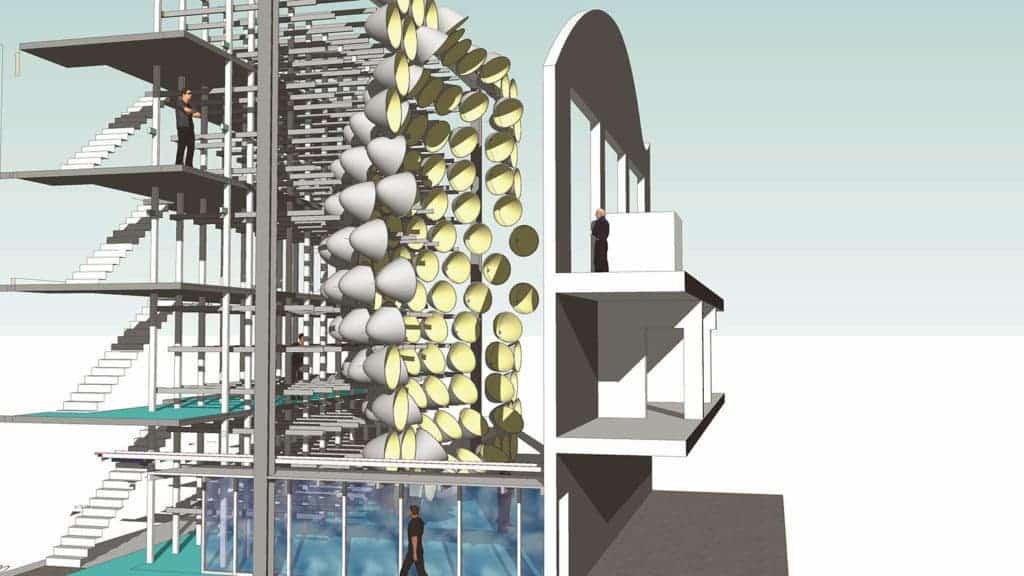This week, the German Aerospace Center (DLR) Institute for Solar Research turned on the Synlight project, an array of 149 huge spotlights. Together, these spotlights converge on a single 20-by-20 centimeter (8×8 inch) spot onto which it projects 10,000 times the amount of solar radiation that would have normally shined on the surface. The researchers call it the largest ‘artificial sun’, though we shouldn’t confuse it with fusion energy projects which would be more deserving of the title.
A huge lightbulb
The setup is comprised of xenon short-arc lamps, which you’d typically find in a modern cinema, arranged in a honeycomb structure in Juelich, just 30 kilometers (19 miles) west of Cologne. When the lights are turned on, an immense amount of power is concentrated on a small surface, just enough to heat it in excess of 3,000 degrees Celsius.
Unlike the sun, however, this project doesn’t create it energy. Rather, it eats it with a voracious appetite. Turning on the lights for four hours consumers as much electricity as a four-person household does in a whole year. It might help generate energy, though.
The goal of the project is to better understand solar radiation dynamics to find out how to maximally exploit solar energy. For instance, a setup similar to Synlight only comprised of mirrors could be used to generate renewable liquid hydrogen, a fuel which emits zero emissions when combusted. Right now, 99% of all man-made hydrogen is derived from fossil fuels through an energy and carbon intensive process called methane reforming.
Of course, hydrogen by itself is not without problems. Storing it can be a hassle because it’s the lightest and smallest molecule and just escapes most containers. It’s density is very small which can also be problematic. However, combining it with carbon monoxide results in eco-friendly kerosene for the aviation industry.
Once scientists master hydrogen production with Synlight, they can scale the system tenfold — all powered by the sun, not electricity, this time.
The DLR labs are busy with other interesting projects. One of them involves creating artificial comets made of water, rock dust, and soot, all locked in a vacuum chamber that, of course, contains an artificial sun.










